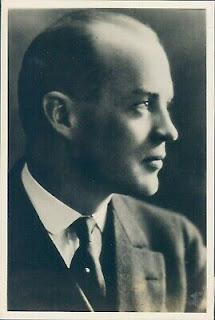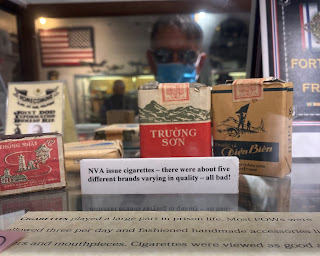According to the website of Navy Lakehurst Historical Society, the steward of the crash site, tours are offered in the summer months on Wednesdays and the second and fourth Saturdays. Reservations—made at least two weeks in advance—are required, no ifs, ands, or buts about it. Tours last three hours. A three-hour tour of a charred spot on the ground? Oy.
As they say on late night infomercials, but wait, there’s more. The tour also promised The Cathedral of The Air (what?), the Navy Lakehurst Heritage Center, The Ready Room, the POW-MIA Room and Historic Hangar One. No wonder it was scheduled for three hours.
I emailed about a reservation and got an ALL CAPS reply instructing me to fill out the CONTACT FORM. After I sent in the appropriate info, I got another ALL CAPS reply. The acknowledgement started with this line: DO NOT GO TO THE MAIN GATE AT NAVAL BASE and went on from there, in a style that can only be described as military English as a second language. But it was good to know that “A GIFT SHOP IS AVAILABLE”. Available for what, well, your guess is as good as mine.
The acknowledgement included driving directions from the Newark Airport and Patuxent River, MD (seriously) but did not include directions for getting there from what used to be called the “shore points”. They didn’t include a street address for plugging into a GPS or even the name of the place I was looking for. The instructions ended with this bit of info: Bear left on Route 547 at traffic light and proceed about ¼ Mile on left large church parking lot. (If you go over RR tracks you went too far).
The large church parking lot turned out to be the parking area for the Cathedral of the Air. And I was there right on time too, even counting that nanosecond delay when I actually considered going to Leisure Village.
There were about ten people there for the morning tour, including two families with kids. There were two docents on hand to guide us through the morning’s tour. The taller one, with bearing and voice like an NCO, did most of the talking. The other guide, of a more avuncular mien, was a tad forgetful and seemed like the backup docent.As you might expect from something having to do with the military, it was hurry up and wait. We had to be there promptly at 9:30 so we could flog our yo-yos in Calcutta-like heat and humidity in a large church parking lot. The reason? A TV station was filming b-roll in the Cathedral. Seriously, they couldn’t have scheduled the TV station to shoot b-roll at some other time?
Someone with too much of someone else’s money thought that the place might be a terrorist’s target, and so after 9/11 we taxpayers paid for a big fence around the place.
The Cathedral of the Air was conceived by Gill Rob Wilson, a World War I aviator who was ordained as a Presbyterian minister after the war. It was designed by well-known Philadelphia architect Paul Phillipe Cret in a Norman Gothic style.
Rev. Wilson sounded like an interesting guy. After this ordination, he was called by the 4th Presbyterian Church of Trenton, and while there served as the Chaplain for the American Legion in New Jersey. After his wife and daughter died of influenza, he lost the ability to speak and doctors recommended total silence if he wanted to regain his voice. Yikes! Wiki is unclear here, but presumably his voice returned at some point.Rev. Wilson left his calling and became the Director of Aeronautics for the State of New Jersey, presumably because safe air travel in the 1920s required lots of prayers. He went on to become not only the first director of the Civil Air Patrol but also the first member of the Aircraft Owners and Pilots Association. If that weren’t enough, he witnessed an atomic bomb test at the Bikini Atoll and became the editor of Flying magazine. The airport in Parkersburg, WV is named in his honor.
In case you’re wondering, none of that info is on the tour. Conveying that info would have taken up valuable time that we spent flogging our yo-yos.
After what seemed like forever but was probably 20 minutes, the TV folks had their b-roll and the docents showed us into the building. We gathered in the narthex where they pointed out the bronze tablets that were memorials to two US Navy airships: The USS Akron and USS Shenandoah.
The 785-foot-long Akron was designed to be a flying aircraft carrier of sorts, with the ability to launch and retrieve up to five Curtiss F9C Sparrowhawk biplanes.In April 1933, Akron crashed in a storm off New Jersey’s Barnegat Light, killing 73, including an admiral. It's safe to say that there would have been more survivors had the Navy thought to provide life jackets for those onboard. (There is no record of ordering folks to put their tray tables in an upright and locked position.) Interestingly enough, the US Navy dispatched a blimp to search for survivors, and it crashed, killing two more men.
You don’t have to go too far into the building before deciding that riding on a US Navy airship was kind of a dicey affair.
The building is a bit forlorn; it feels like a church that’s been shut up for years. The grounds need some TLC, there are no announcements pinned to bulletin boards, no friendship registers at the end of pews, and the hymnals are ancient. The furniture in the chancel looks as if someone moved it in order to run the vacuum cleaner and never bothered to put it back.We formed up in a caravan for the short drive to the base. We were warned not to take any photos of the gate and check in procedure. Security, you know! We had to navigate through a chicane of concrete Jersey barricades and show our ID to the soldier staffing the gate so she could check us off on her list.
The marker is in the approximate spot where the Hindenburg’s gondola hit the ground. It’s not much of a marker, but at least it’s something.
We gathered around the docents as they told us the story of the Hindenburg’s final hours, how it came in to land after its first scheduled transatlantic voyage of 1937, caught fire, and crashed.
Our guide's belief was that a spark of static electricity ignited leaking hydrogen causing the crash. For those of you keeping track at home, there were 97 people on the airship—36 passengers and 61 crew—there were extra crew on board for training. Of the 36 who were killed, 13 were passengers, 22 were crew, and a civilian on the ground crew died too. Many of those who survived had terrible burns.
Although the Hindenburg crash is the world’s most famous airship disaster, twice as many people were killed when the Akron went down. The famous photos, newsreel footage, and Morrison’s narration are seared into our collective memory. Very few know the story of USS Akron which crashed when no one was there to record the scene.
One of the more interesting bits of crap is a prop from the 1975 film Hindenburg starring George C. Scott and Anne Bancroft. The filmmakers built a life sized model of the control room and when they were finished with it, tried to donate it to the Smithsonian. The “nations attic” wouldn’t take it since it’s a movie prop and not an actual historic artifact. However, the US Navy said sure, we have room for more crap in the 996 feet long Historic Hanger #1.
And so there it is.
And Mr. NCO docent decided to tell us about each and every item.
To his credit, there were a couple of young children on the tour who were super interested and he did a great job with them. But for me, who spent a fair part of my childhood building model airplanes, listening an exegesis on the different paint schemes on a Grumman F6F Hellcat was pretty much the same as the Chinese Water Torture. Especially since that talk was followed up by an equally long discourse on the next airplane model in the display case.After what seemed like a lifetime of this, I slipped away from the group. I was decidedly unready to see the Ready Room, and I was going to be MIA when it came to the POW/MIA Room.
But I passed up the 80th HINDENBURG ANNIVERSARY GOLF SHIRT BLOW OUT. Oh my. I mean, really.
I didn’t look at my watch, but I was there about three hours. A LONG three hours. It was time to put Stone Harbor into my GPS and head home.
The historical society has a lot to work with—the Cathedral of the Air is an incredible artifact. The story of the Hindenburg disaster is still riveting more than 80 years after the crash.
But the organization runs on a shoestring and it shows. The website is terrible, the ticketing system is ancient, and guides are knowledgeable and well-meaning but need a real script. Yes, there are wow moments. But they are overshadowed by the general dreadfulness of the experience. There were times when I thought, “having a ticket on the Hindenburg couldn’t have been this bad”.
As far as tourist experiences go, it wasn’t as bad as the Mob Tour of Las Vegas—which is the undisputed king of bad tourism—but, as Herbert Morrison might have said, Oh the humanity!










































No comments:
Post a Comment